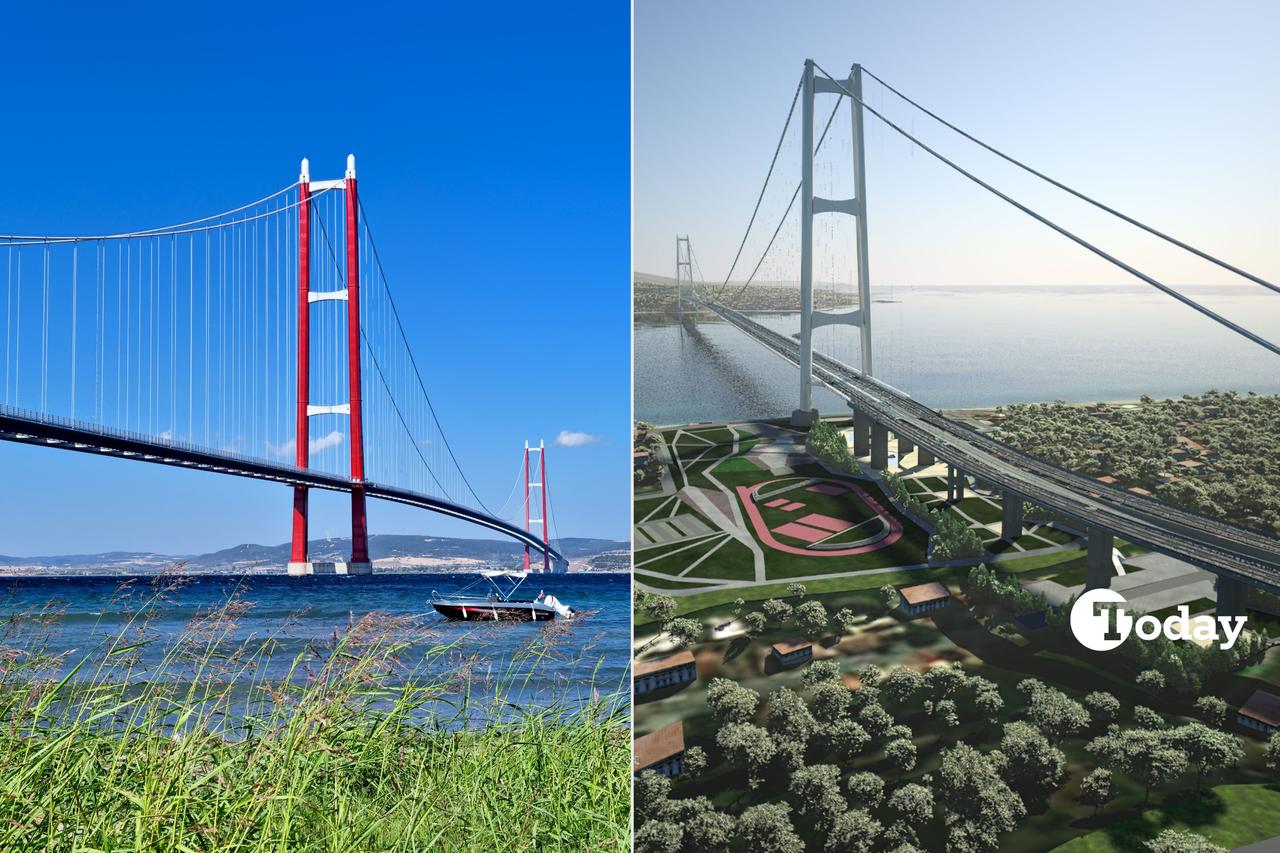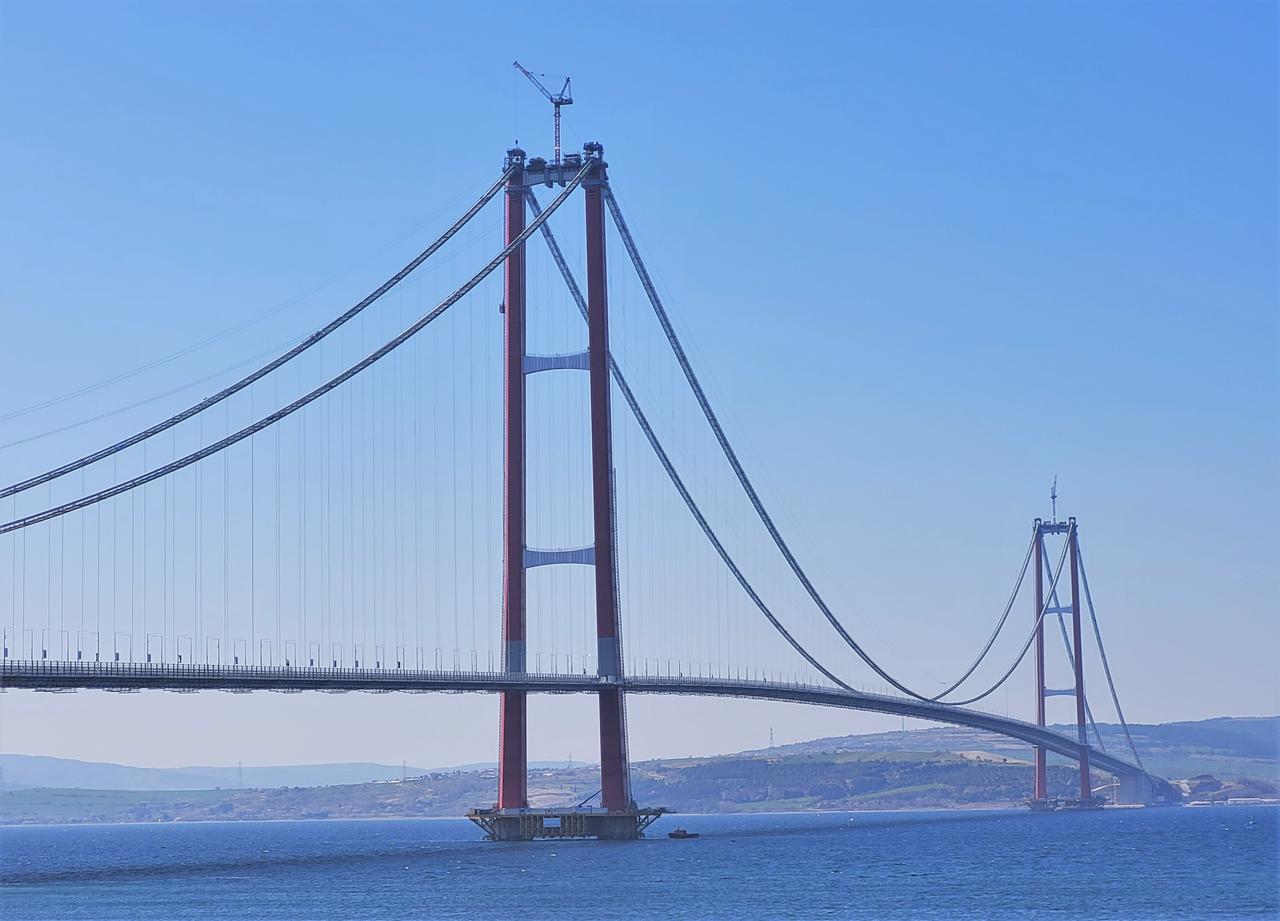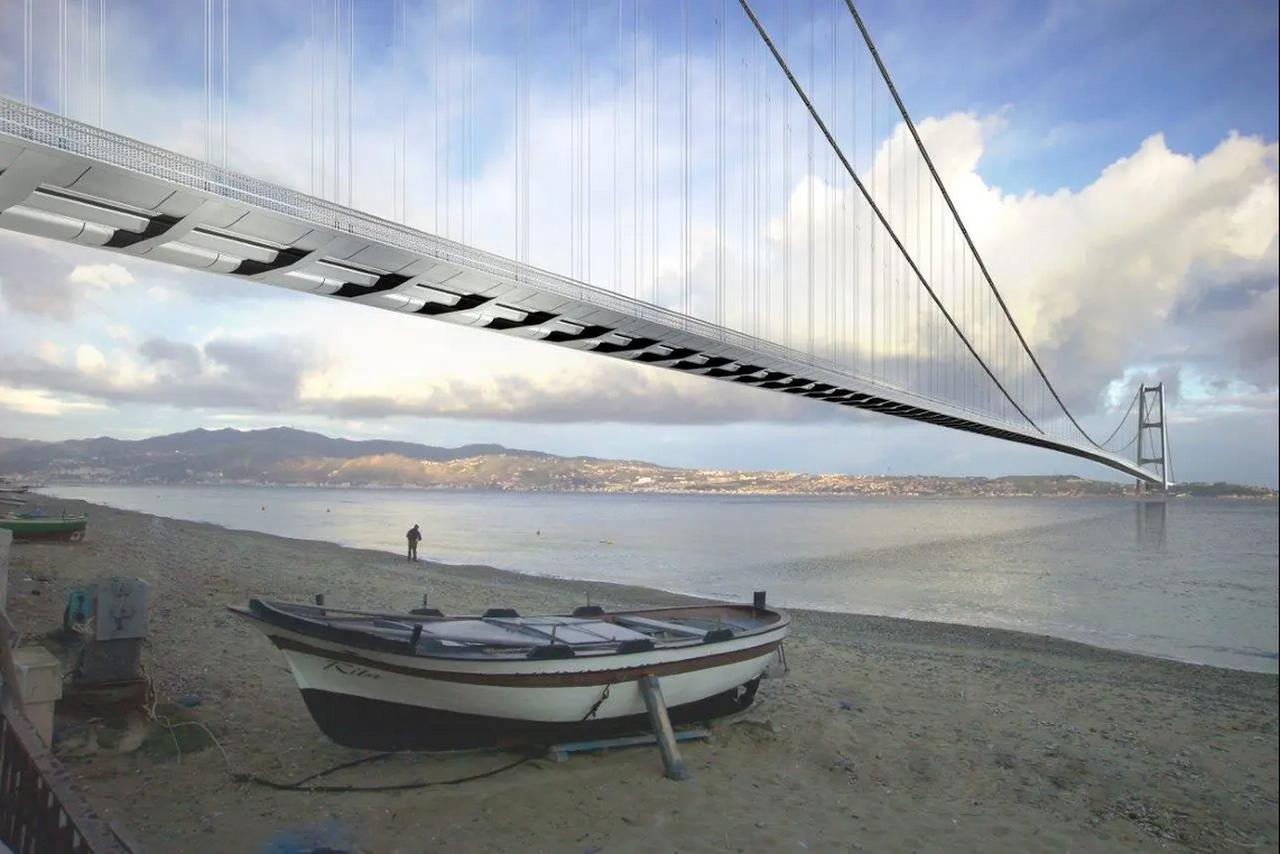
I was fascinated by bridges early on in life, growing up in the mountainous terrain of Italy. They were the famous signature arch bridges that link mountains, leaping so gracefully across valleys like gazelles.
Although they are enormous engineered infrastructures within the landscape, they appear as sensitive features hovering high, defying gravity, leaving the surface below unspoiled. It’s a sight to behold!
Bridges have always been special; they are monuments—landmarks in fact—with unique identities. They are regarded as great feats, seemingly "stretching" the terrain, enabling access to where there was none—a thankful convenience. They have been the pride of nations and towns worldwide.
As impressed as I was with the elegance of the vaulting arch bridges, my attention would in time turn to the daring spans that could only be achieved with suspension technology. In the 70s and 80s, I marveled at the two acclaimed bridges that span the Bosphorus Strait linking Europe to Asia and their precedents such as the iconic Golden Gate Bridge.
Suspension bridges are the preferred structures for spanning long crossings over 1,000 meters. The George Washington Bridge, completed in 1931, was the first suspension bridge to record a free span of 1,067 meters. In 1937, the famous Golden Gate Bridge achieved a record free span of 1,289 meters. Since then, there have only been four suspension bridges that have progressively added to the length of a single span, culminating with the completion of the 1915 Canakkale Bridge in 2022. Today, there are about 50 suspension bridges with spans over 1000 meters, five of which are in Türkiye.

The Canakkale Bridge in Türkiye, with an overall length of 4,608 meters, crosses the Dardanelles Strait southwest of Istanbul—it holds the current world record for a single span of 2023 meters. In the mid-1990s, it was deemed unfeasible, and it was not until two decades later that a new study, citing advancements in material technology and engineering, gave it the green light. It eclipses the previous record holder, the Akashi Kaikyo Bridge of Japan (built in 1997), by 32 meters.

Since ancient Roman times, there has been a desire by Italian governing bodies to bridge the Strait of Messina and connect the island of Sicily to the mainland. Through the ages—despite the insurmountable constraints posed by structural engineering, the environment, politics, and socioeconomics—proposals in Italy to physically link the peninsula to its southern island have been unwavering, yet inconclusive. It’s a pursuit driven not only by practical and economic needs, but also by national pride—something often claimed by such mega-projects.
A concerted technical evaluation in Italy was undertaken during the mid-1800s, with no positive results. A hundred years later, in 1950, the idea resurfaced when Tempo Magazine headlined: "World's Longest Bridge."
Geologic surveys followed, and an international competition was launched. Numerous submissions were made featuring both tunnel and bridge options. There were six finalists, including a five-span suspension bridge. The lot was eventually rejected.
In the 1990s, following the election of former Italian Prime Minister Silvio Berlusconi, it was declared that a suspension bridge with a 3300-meter clear span was the most desirable. He revived the project in 2008 and again in 2011, only to have it cancelled in 2013 by a new government citing economic constraints.
In March 2023, the newly formed Italian government tabled a decree to once again pursue the bridge’s construction—this time with proponents and consultants assuring its technical feasibility. The announcement came just a year after the completion of the Canakkale Bridge, whose unprecedented engineering feat surely spurred renewed hope for the ambitious Messina Bridge.
Notably, the Canakkale Bridge used cutting-edge Italian suspension bridge innovations and products that had been originally specified for the proposed Messina Bridge.
The Dardanelles and Messina Strait crossings present similar technical and environmental challenges, including wind loads and seismic risks.
To address wind factors—a key threat to suspension bridges—the Canakkale Bridge adapted the Messina Bridge Deck Type. This design has a winged profile akin to a fighter jet’s fuselage, allowing wind to pass through openings in the structure and reducing sway.
For seismic resistance, the Canakkale Bridge used state-of-the-art components from Italian manufacturer FIP MEC, including unique spherical bearings, hydraulic devices, and special fluid dynamic dampers. These act as an anti-seismic system capable of withstanding the strongest earthquakes on record, including the 7.1 magnitude Messina Earthquake of 1908.
Türkiye's Canakkale Bridge team, considered one of the world’s leading suspension bridge experts, validated the use of Italian innovations. Meanwhile, Webuild—the Italian company leading the Eurolink Consortium for the Messina Bridge—played a major role in two of the three suspension bridges over the Bosphorus, reinforcing its credentials.
Construction of the Messina Bridge is expected to begin in summer 2025, with completion targeted for 2032. The final design has been approved, but clearance from the state committee on critical infrastructure is still pending.

The Canakkale Bridge’s record span of 2023 meters is considerably shorter than the Messina Bridge’s proposed 3300 meters. Moreover, the Messina Bridge’s 60-meter-wide deck—compared to the Canakkale Bridge’s 45 meters—is designed to support a double railway track, adding significant load.
The Canakkale Bridge only surpassed the Akashi Kaikyo Bridge’s 1991 m span by 32 meters—a 1.6% increase. Though the symbolic length of 2023 commemorates the centennial of the Turkish Republic, one wonders whether technological limits played a role in the decision.
If the Messina Bridge is completed by 2032, it would surpass the Canakkale Bridge by 1287 meters—a 63% increase in just 10 years. That would be a quantum leap, considering it took 90 years to add less than 1000 m to previous records. This leap, plus the greater width and load, poses significant engineering challenges.
However, the Messina Bridge team has responded with a robust design approved by top experts. Financial, environmental, and political obstacles remain, but here too the Messina Bridge can learn from the Canakkale Bridge, which was delivered ahead of schedule, within budget, and with broad support.
The Messina Bridge’s 400-meter towers have drawn some concern due to their visual impact. Preliminary calculations show the towers would be visible up to 70 kilometers away under optimal conditions, appearing as faint vertical lines. From Capo Vaticano (45 kilometers away), 235 meters would be visible; from Ditella (60 kilometers away), 125 meters.
Still, visibility would fluctuate with weather and distance. While some may initially view them as intrusive, these towers could become iconic landmarks—symbols of national unity and engineering excellence, much like the Golden Gate and Canakkale Bridges.
The Messina Bridge would mark a historic milestone and a quantum leap in infrastructure technology. Like Roman aqueducts of the past, it would be a triumph of Italian ingenuity.
In ancient times, Constantinople (Istanbul) served as the Roman Empire’s eastern capital, fostering exchange between Asia and Europe. The technological synergy between the Canakkale Bridge and Messina Bridge revives that legacy of unity and shared values.
Over 20,000 years ago, a natural land bridge once linked Sicily and the peninsula. Now, thanks to human ambition and cooperation, that connection may return—this time engineered and eternal.
About the author — Fidenzio Salvatori is a practicing landscape architect and a former professor at the University of Toronto. Italian by birth and raised in the Marche region, he draws on both his professional expertise and personal heritage to explain why Türkiye’s approach to large-scale infrastructure—both in design and execution—offers valuable insights for Italian planners and policymakers.